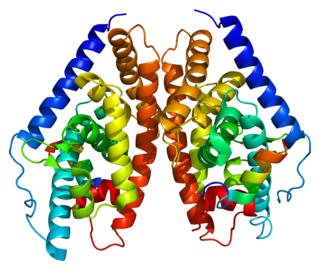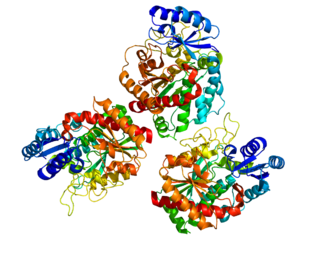| CPM | |||||||||||||||||||||||||||||||||||||||||||||||||||
|---|---|---|---|---|---|---|---|---|---|---|---|---|---|---|---|---|---|---|---|---|---|---|---|---|---|---|---|---|---|---|---|---|---|---|---|---|---|---|---|---|---|---|---|---|---|---|---|---|---|---|---|
 | |||||||||||||||||||||||||||||||||||||||||||||||||||
| |||||||||||||||||||||||||||||||||||||||||||||||||||
| Identifiers | |||||||||||||||||||||||||||||||||||||||||||||||||||
| Aliases | CPM , carboxypeptidase M | ||||||||||||||||||||||||||||||||||||||||||||||||||
| External IDs | OMIM: 114860 MGI: 1917824 HomoloGene: 35367 GeneCards: CPM | ||||||||||||||||||||||||||||||||||||||||||||||||||
| |||||||||||||||||||||||||||||||||||||||||||||||||||
| |||||||||||||||||||||||||||||||||||||||||||||||||||
| |||||||||||||||||||||||||||||||||||||||||||||||||||
| |||||||||||||||||||||||||||||||||||||||||||||||||||
| |||||||||||||||||||||||||||||||||||||||||||||||||||
| Wikidata | |||||||||||||||||||||||||||||||||||||||||||||||||||
| |||||||||||||||||||||||||||||||||||||||||||||||||||
Carboxypeptidase M is an enzyme that in humans is encoded by the CPM gene. [5] [6]
| CPM | |||||||||||||||||||||||||||||||||||||||||||||||||||
|---|---|---|---|---|---|---|---|---|---|---|---|---|---|---|---|---|---|---|---|---|---|---|---|---|---|---|---|---|---|---|---|---|---|---|---|---|---|---|---|---|---|---|---|---|---|---|---|---|---|---|---|
 | |||||||||||||||||||||||||||||||||||||||||||||||||||
| |||||||||||||||||||||||||||||||||||||||||||||||||||
| Identifiers | |||||||||||||||||||||||||||||||||||||||||||||||||||
| Aliases | CPM , carboxypeptidase M | ||||||||||||||||||||||||||||||||||||||||||||||||||
| External IDs | OMIM: 114860 MGI: 1917824 HomoloGene: 35367 GeneCards: CPM | ||||||||||||||||||||||||||||||||||||||||||||||||||
| |||||||||||||||||||||||||||||||||||||||||||||||||||
| |||||||||||||||||||||||||||||||||||||||||||||||||||
| |||||||||||||||||||||||||||||||||||||||||||||||||||
| |||||||||||||||||||||||||||||||||||||||||||||||||||
| |||||||||||||||||||||||||||||||||||||||||||||||||||
| Wikidata | |||||||||||||||||||||||||||||||||||||||||||||||||||
| |||||||||||||||||||||||||||||||||||||||||||||||||||
Carboxypeptidase M is an enzyme that in humans is encoded by the CPM gene. [5] [6]
The protein encoded by this gene is a membrane-bound arginine/lysine carboxypeptidase. Its expression is associated with monocyte to macrophage differentiation. This encoded protein contains hydrophobic regions at the amino and carboxy termini and has 6 potential asparagine-linked glycosylation sites. The active site residues of carboxypeptidases A and B are conserved in this protein. Three alternatively spliced transcript variants encoding the same protein have been described for this gene. [6]

Membrane alanyl aminopeptidase also known as alanyl aminopeptidase (AAP) or aminopeptidase N (AP-N) is an enzyme that in humans is encoded by the ANPEP gene.

The colony stimulating factor 1 (CSF1), also known as macrophage colony-stimulating factor (M-CSF), is a secreted cytokine which causes hematopoietic stem cells to differentiate into macrophages or other related cell types. Eukaryotic cells also produce M-CSF in order to combat intercellular viral infection. It is one of the three experimentally described colony-stimulating factors. M-CSF binds to the colony stimulating factor 1 receptor. It may also be involved in development of the placenta.

CD68 is a protein highly expressed by cells in the monocyte lineage, by circulating macrophages, and by tissue macrophages.

The granulocyte-macrophage colony-stimulating factor receptor also known as CD116, is a receptor for granulocyte-macrophage colony-stimulating factor, which stimulates the production of white blood cells. In contrast to M-CSF and G-CSF which are lineage specific, GM-CSF and its receptor play a role in earlier stages of development. The receptor is primarily located on neutrophils, eosinophils and monocytes/macrophages, it is also on CD34+ progenitor cells (myeloblasts) and precursors for erythroid and megakaryocytic lineages, but only in the beginning of their development.

Macrophage migration inhibitory factor (MIF), also known as glycosylation-inhibiting factor (GIF), L-dopachrome isomerase, or phenylpyruvate tautomerase is a protein that in humans is encoded by the MIF gene. MIF is an important regulator of innate immunity. The MIF protein superfamily also includes a second member with functionally related properties, the D-dopachrome tautomerase (D-DT). CD74 is a surface receptor for MIF.

C-C chemokine receptor type 2 (CCR2 or CD192 is a protein that in humans is encoded by the CCR2 gene. CCR2 is a CC chemokine receptor.

C-C chemokine receptor type 1 is a protein that in humans is encoded by the CCR1 gene.

Liver X receptor beta (LXR-β) is a member of the nuclear receptor family of transcription factors. LXR-β is encoded by the NR1H2 gene.

Carboxypeptidase B2 (CPB2), also known as carboxypeptidase U (CPU), plasma carboxypeptidase B (pCPB) or thrombin-activatable fibrinolysis inhibitor (TAFI), is an enzyme that, in humans, is encoded by the gene CPB2.

Heat shock 70 kDa protein 4 is a protein that in humans is encoded by the HSPA4 gene.

Natural resistance-associated macrophage protein 1 is a protein that in humans is encoded by the SLC11A1 gene.

Plasma membrane calcium-transporting ATPase 1 also known as Plasma membrane calcium pump isoform 1 is a plasma membrane Ca2+
ATPase, an enzyme that in humans is encoded by the ATP2B1 gene. It's a transport protein, a translocase, a calcium pump EC 7.2.2.10.

CD84 is a human protein encoded by the CD84 gene.

Carboxypeptidase D is an enzyme that in humans is encoded by the CPD gene.

Carboxypeptidase N catalytic chain is an enzyme that in humans is encoded by the CPN1 gene.

Probable serine carboxypeptidase CPVL is an enzyme that in humans is encoded by the CPVL gene. The "CPVL" gene is expressed mainly in monocytes and macrophages, and it is located in the endoplasmatic reticulum and in the endosomal/lysosomal compartment. The distribution of CPVL suggests that the enzyme may be involved in antigen processing and the secretory pathway. Besides those macrophages-rich tissues, the heart and kidney also express high levels of CPVL mRNA.The enzyme is similar to the carboxypeptidases CATHA and SCPEP1, but no direct confirmation of the enzymatic activity was obtained so far. The exact function of this protein, however, has not been determined.

Lysosomal Pro-X carboxypeptidase is an enzyme that in humans is encoded by the PRCP gene.

Carboxypeptidase N subunit 2 is an enzyme that in humans is encoded by the CPN2 gene.

Origin recognition complex subunit 1 is a protein that in humans is encoded by the ORC1 gene. It is closely related to CDC6, and both are the same protein in archaea.
Carboxypeptidase M is an enzyme. This enzyme catalyses the following chemical reaction